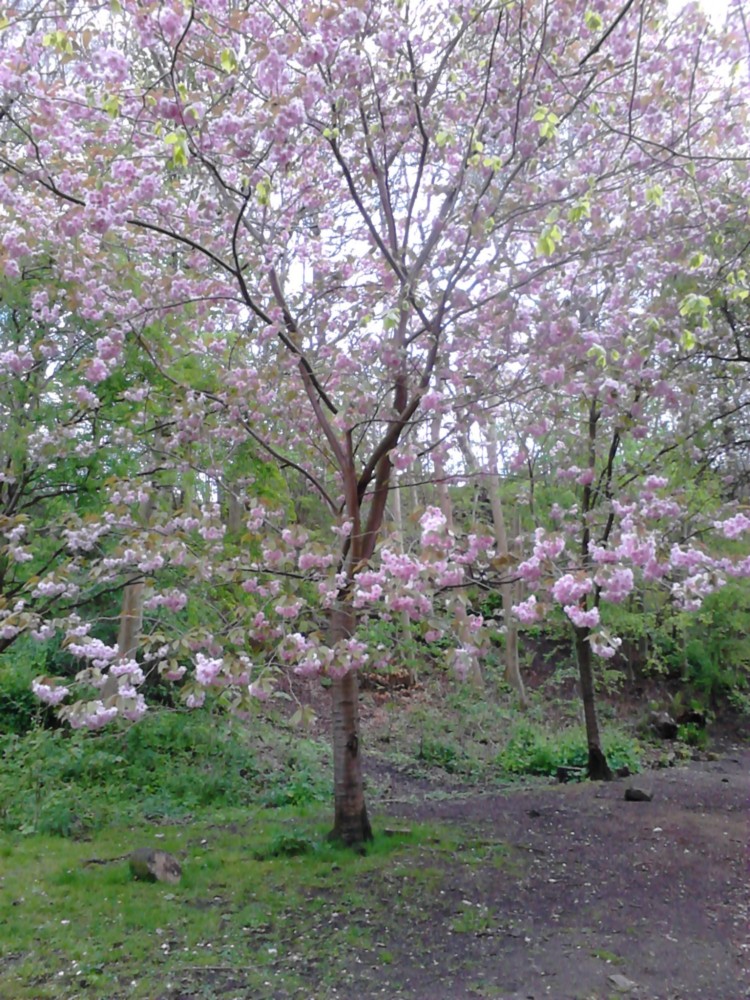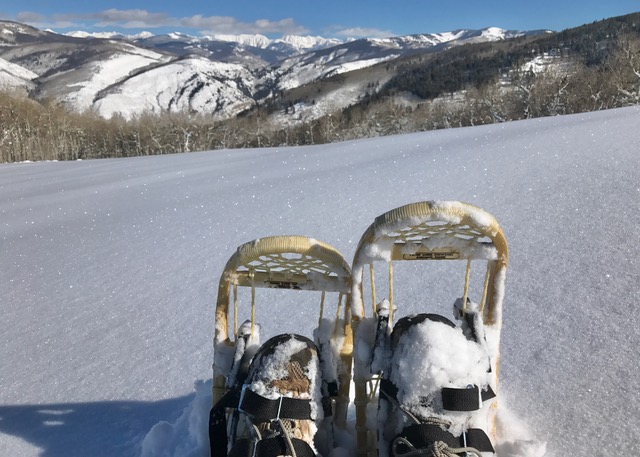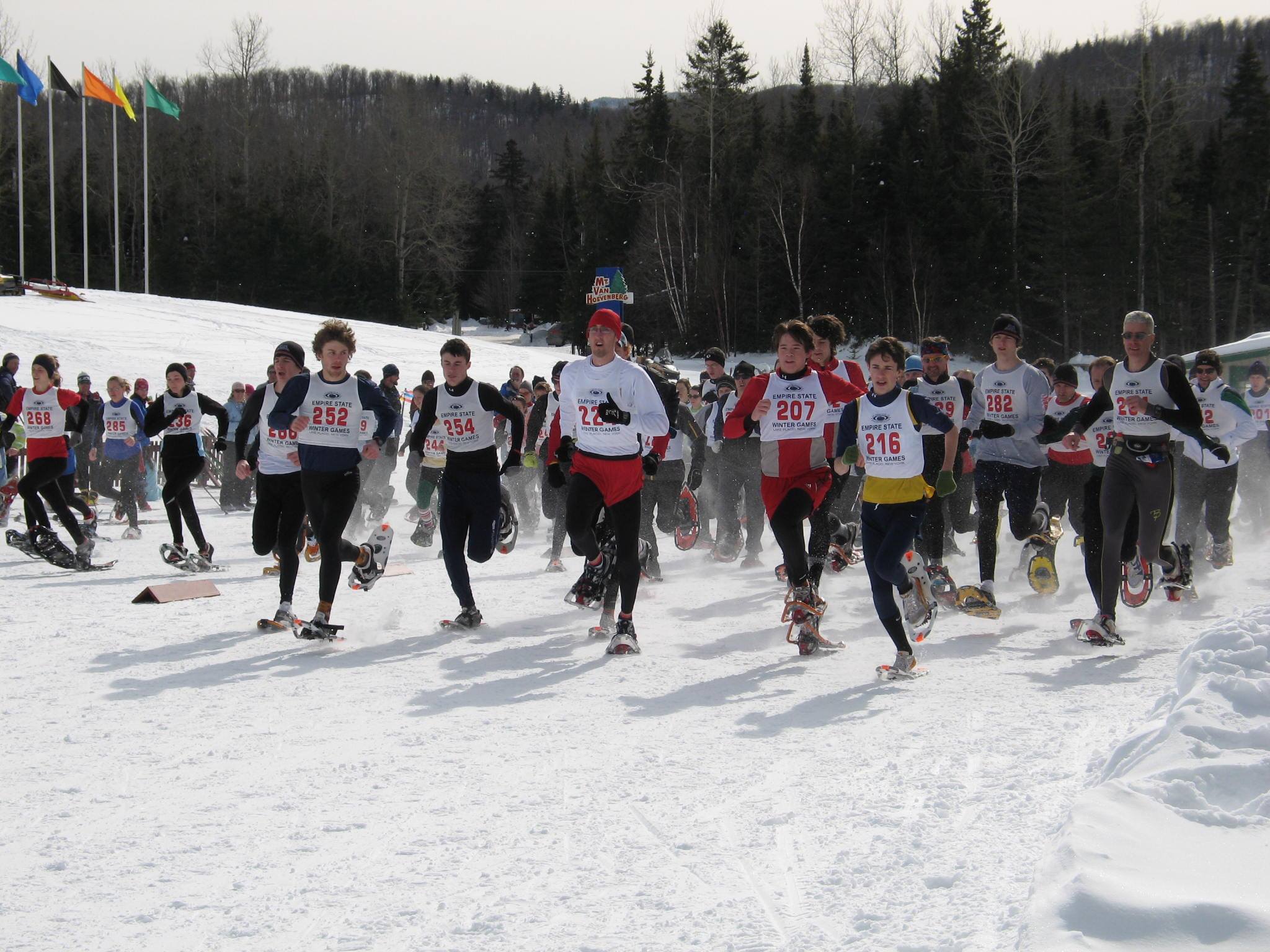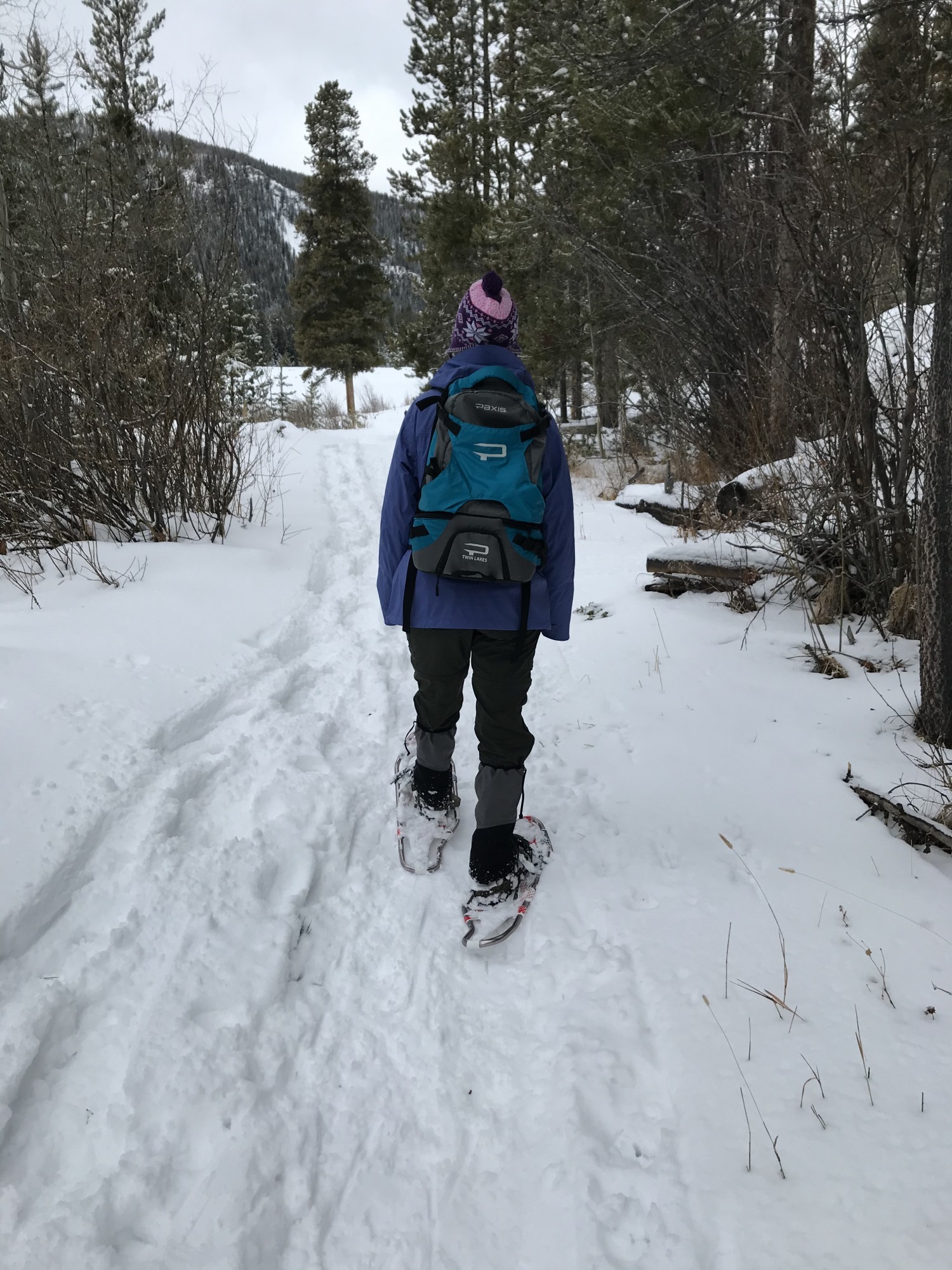“Our deepest fears are like dragons guarding our deepest treasures.” –Rilke
Learning to snowshoe is not difficult.
Anyone able to walk can usually learn how to snowshoe within 50-100 meters without struggle. Soon thereafter you will begin to discover with each footstep the ethereal aspects of our sport.
Mastering our sport – whether backcountry or sport snowshoeing – will require much more effort, and like life, it will be an ongoing process. The key to enjoyable and meaningful snowshoeing is the difference between effort and struggle.
The Zen saying “How you do anything is how you do everything” applies to your snowshoeing and your life. Snowshoeing allows you to commune with Mother Earth and its splendor. It is pointless to slog about in the snow when you are unprepared and then gripe about your experience afterward. There is a connection between your mind, body, and spirit. Every word, every gesture, every movement imparts consequences.
Yoga is the union of mind and body. It is the embodiment of physical, spiritual, and social growth. It is also the yoke bonding the individual with the universe. It is a systematic approach toward mindfulness and equanimity through breath (asanas) and postures (pranayama). It is not religion though its origin in India was a spiritual path.
The Sanskrit, the ancient religious text and language of the Vedas and Hinduism, birthed yoga to mean a fusion of mind and body, of science and art, through discipline. Yoga is often mistaken for religion, yet it is much more than a series of postures or poses.
Indian sage Patanjali fused philosophical and metaphysical yogic impulses into the first written collection about 2,000 years ago. His Yoga Sutra is a treatise on yogic philosophy and provides the foundation upon which yoga is based today. The collection of 195 statements is considered the backbone of knitting human challenges with the universal truths of self-development.
Snowshoeing and yoga possess deep-rooted histories. Both have been in existence for thousands of years. Both require discipline. Both test your resolve. Participation in both pursuits is growing annually at astounding levels. Snowshoeing is a strenuous sport. The innumerable benefits to your health represent a viable trade-off for your effort and will transcend to your daily life – only if you allow it. This requires practice.
Physical fitness is necessary to enjoy snowshoeing. Patanjali stated that mastering the body was a prerequisite for spiritual enlightenment. Just as one cannot travel from sea level to proficiently hike at altitude without proper training; you cannot expect to competently handle the rigors of snowshoeing without adequate off-season planning.
Being of sound body is just one component to maximize your snowshoeing. Mental fitness is at least as important as physical fitness and often times determines the outcome of our situation – whether we are driving our vehicle in a blizzard or toeing the starting line at the sport snowshoe championship.
Sue Frederick, (www.BrilliantWork.com) career counselor, author, energy coach, and lecturer, wrote in her January/February column for Nexus, Colorado’s Holistic Journal, “that your energy affects your life.” Consider the possibility that the only thing preventing you from experiencing a life you dream is your negative thinking – not the limited resources or the millions of other excuses we come up with, she stated.
This is sound advice for snowshoers. In our fast-paced world we often use haste to compartmentalize our fitness. Chris Kostman (www.AdventureCorps.com) wrote in Triathlete Magazine about the interconnection of the disparate elements of life. “Far too many of us have lost sight of the interconnectedness of all that makes up the grandeur of life; lost the intrinsic understanding of how every action complements every other; how everything in our human lives is connected in the big picture.”
Believe it or not there is a connection between how you brush your teeth, how you sit at your desk, how you listen, how, what, and when you eat, and how you snowshoe. Your snowshoeing should not be separate from your daily life. Too many people view snowshoeing as a seasonal or weekend pastime distinct from his/her “real life.”
Most fitness regimens focus on physical training specific to your endeavor. A multi-disciplined approach to training will inherently challenge and potentially improve your snowshoeing prowess and every facet of your life. This is where the union of your mind and body begin to gel.
A snowshoer should consider him/herself an outdoor athlete. Linear thinking, single-minded pursuits, and sport-specific only performance training must be replaced by a more balanced, multi-tiered approach. “The outdoor athlete seeks not an arena but embraces the globe,” wrote Steve Ilg, creator of Wholistic Fitness® (www.wholisticfitness.com).
Wholistic Fitness® is an integrated and practical approach to develop a deeper meaning of fitness and a higher understanding of health – it is a challenging vehicle for personal growth. It is a multi-disciplined approach to fitness that cultivates self-realization and sport performance. Ilg refers to this as “cross-training for life.”
The union of mind and body will make your snowshoeing and life more meaningful. The union can be lived only through a multi-disciplined approach. Nobody said that attaining such a heightened level of awareness would be as easy as learning to snowshoe. Practice will help you understand the difference between effort and struggle.
There is no separation of mind and body; we must function as a psychosomatic unit, Ilg stated in his book, The Winter Athlete. “Much of sport performance relies upon controlling the mind. We do not wish to suppress the flow of mind, but rather, direct its power. This direction of mental capacity is what I call focus and what a Zen Buddhist might term one-pointedness,” he said.
Ilg’s multi-disciplined approach is a way of life versus a training method. Its roots are entrenched in the multi-sport tradition and its teachings are about principles instead of simply crunching numbers. A multi-disciplined approach will build the physiological power and mental tenacity requisite for efficient snowshoeing.
It has been documented through research from Ball State University and the University of Vermont that snowshoeing will burn 420-1,000 calories per hour, “Snowshoeing is an effective, low impact, and safe form of exercise to change body composition. It burns up twice the number of calories as walking at the same speed,” according to Dr. Declan Connolly, of the University of Vermont exercise and physiology department.
“Snowshoeing utilizes major muscle groups which, when combined with a higher metabolic rate in cold weather and the added resistance of moving through snow, results in a high-energy activity,” Connolly said (PowdeRidge.com). “The energy expenditure during snowshoeing is much higher than previously considered and varies considerably because of snow terrain. Furthermore, energy expenditure levels similar to walking can be achieved on snowshoes at much slower speeds,” Connolly noted (PubMed / National Library of Medicine. www.ncbi.nlm.nih.gov/entrz.com).
The benefits of snowshoeing are virtually limitless. It is an excellent cardiovascular form of exercise combined with strength and endurance training. Snowshoeing is a sport for your entire family. This low-impact sport is used for joint rehabilitation for persons suffering lower body injuries, hikers, recreational enthusiasts, climbers, snowboarders, cyclists, and multi-sport athletes as part of their cross-training regimen.
“Snowshoeing builds endurance levels and strengthens lower-body musculature, especially the quadriceps,” Ilg said. “Climbing in snowshoes brings the hip flexors and extensors into play and often spikes the heart rate commensurably,” he added.
The intangible elements of snowshoeing may impart the most pronounced benefits. Find the following excerpt from The Winter Athlete:
“From a logical standpoint, running around on snowshoes through cold conditions may not sound very fun. Do it, however, and a definite magic arises that cannot be deciphered by the intellect. Each snowshoe session seems to hold spiritually evocative elements. At times when I am out snowshoeing, surrounded by Mother Earth adorned in her splendid winter plumage, the magnificence of mere breath and being seems to me beyond normal conception. Transcendent experiences come easily with each floating footfall awash in a wave of white beneath me. Or perhaps it is the hypnotic rhythm and tempo of the sport that lulls the analytical mind and releases natural flow and joy. If others share a similar experience from this simple, beautiful sport, is it any wonder why (sport) snowshoeing calls us”?
Awareness is the bottom line. A multi-disciplined approach to training does not separate the snowshoer from his/her life. This is the distinguishing feature from conventional fitness training methods where fitness is treated as something else to add to one’s busy schedule. This results in struggle because snowshoeing is viewed as a pastime.
Components of a multi-disciplined program build integrity. Integrity is living your true nature. Dr. James Rouse, a naturopathic physician, consultant, and multi-sport athlete, identifies the components of integrity on his Web site (drjames.com). “Integrity is having the courage and the self-discipline to live your life authentically by your inner truth,” Rouse wrote. He believes the keys to creating personal integrity include living with wholeness; goodness; courage; self-discipline; and by your inner truth.
Mastering the essence of snowshoeing will take a lifetime. Components of a multi-disciplined lifestyle will broaden your journey. The following Lifestyle Principles (courtesy of Wholistic Fitness®), for example, will expand the breadth of your inner work.
Breath and Posture
“Breath and posture represent our immaterial and material realities. One connects us with the spiritual plane (breath) and the other grounds our concentration to the material plane (posture),” Ilg said. Breath and posture anchor structural and energetic integrity and are the foundations to sport performance.
Diaphragmatic breathing massages of the spleen, stomach, intestines, and other organs and creates a curative effect by stimulating meridians/energy channels within the body. Numerous cultures impose naturally the science of breath, “pranayama.” Western cultures tend to take each breath for granted, thus, shortchanging the body with shallow chest-oriented breaths that stifle healthful living and sport performance.
A lack of postural awareness highlights the issues with conventional, sport-specific training programs compared with a “whole” approach. The combination of overused and under-trained muscles creates a greater potential for injury. Flexibility is lost, and the imbalance results in under-coordinated movement patterns, Ilg said.
Mindfulness
“The best way out is always through.” –Robert Frost
It is “the cultivated quality of conscious attention, it is about being present in the moment, and it is incredibly important to health, fitness, and sport performance,” Ilg said. Mindfulness refers to the quality of each moment in everything we do.
“Without mindfulness, we cannot receive the presence of the moment, be it the energy of a child’s smile, the power of a snowy summit, or the kiss of windswept sun across our face,” he said.
“The role of mindfulness in sport snowshoeing is one of discriminative wisdom; for example, observing the incoming data without emotive adjunct and allowing a clear neuromuscular pathway to arise,” Ilg remarked.
Mindfulness is like being “in the zone” in today’s sports culture. It is merging with your snowshoeing, revering the cold air, feeling your posture, hearing your talons slice the snow, listening to your breath … living each moment in harmony.
Mindfulness mandates that happiness must occur within the moment – not in the future.
“The constant pursuit of happiness is just perpetuating illusions,” according to Charles Tart, mindfulness teacher and psychologist. Or as Ron Kurtz stated, “Mastery is the natural result of mindfulness.”
Appropriate Action
Appropriate action represents the most advanced principle of this lifestyle. It is the practice of living with integrity. A lot of appropriate action is common sense. It is self-cultivation. It is behaving with integrity because “how you do one thing is how you do anything.”
If you want to become a more proficient snowshoer then you need to make changes from within to mitigate your struggle. It takes time. It takes practice. Mastery is an ongoing process.
Practice
“If you are true to your practice, complexity will dissolve.” –Khandro Rinpoche
Practice imparts self-transformation. Accept each moment absent of judgment. Learn from it and move forward. “Perseverance in daily practice imparts unwavering even-mindedness through turmoil and stress,” Ilg stated.
Use the grind of daily life to sprout the true snowshoer within you. Difficulty is your training partner. When you can embrace inconvenience and face difficulty with perseverance you are on the path of effort. The union among seemingly disparate elements is being cultivated.
Softness
As outdoor athletes we are consciously aware of the physical fitness aspects required to snowshoe. These include cardiovascular and strength training. You may not be aware of the importance of the oft-misunderstood disciplines of meditation and nutrition. These are vital not only to your snowshoeing but to your health.
Strength Training
“Resistance is the creator of all great things.” –Heraclitus
The power and long-term health benefits from strength training are phenomenal to the snowshoer. Conventional strength training touts structural and functional limbs. A multi-disciplined approach such as Wholistic Fitness® promotes yoga as its third branch.
The union of your mind and body becomes your sanctuary. There are no shortcuts here. Allow your strength training to make you whole. Train with elegance and focus.
Cardiovascular Training
Benefits of this necessary component range from capillary proliferation to structural enhancements, respiration, and lactate threshold. Snowshoeing will test the boundaries of effort and struggle.
Meditation
Meditation is crucial to long-term health and sport performance according to Ilg. “Long-term health and sport performance are manifest from within as a by-product of our mindfulness.” To let go of our ego requires a change of heart, he said on his CD Stream Entry.
Meditation develops emotional equanimity. “Without a practice of Meditation in a personal fitness training program, there can be no long-term body/mind health,” Ilg wrote in his book, Total Body Transformation.
Each of us has an inner sanctuary, a refuge from the clutter of daily life, in which to heal our spirit and nourish our awareness. We just have to find the courage to tap it.
Nutrition
“The important thing is to not stop questioning.” –Albert Einstein
To falter in this realm will incur a profound impact on your snowshoeing.
The name of the game is to achieve balance – be it nitrogen, glycogen, protein, fats, liquids, and so forth. James Rouse, ND, and editor-in-chief of Optimum Wellness Magazine, wrote in the magazine that “Eating a healthful blend of complex carbohydrates, lean proteins, and the right kinds of fats will give you greater sustained energy, better fat-burning ability, improved mood, sharper mental focus, and greater overall health.”
Whether you choose a plant-based diet versus an animal-based diet is equally important as why you chose either route – or combination thereof. A plant-based diet is more conducive to our physiological make-up, according to Bradley Saul, President, OrganicAthlete (www.organicathlete.org). “In terms of nutrition, an athlete should seek foods that are easily digested, assimilated and utilized, and contain an abundance of nutrients. Plant foods, especially fruits and veggies, meet those criteria. Animal foods don’t,” he said.
“Nutrition begins at the cellular level, Ilg wrote in The Winter Athlete. If we do not appreciate the miracle of our bodies we have lost respect for the miracle of self. Regeneration pivots on how we choose to nourish ourselves. Food is sacred, honor your food choices, and eat mindfully”, he added. For optimal health Ilg has depended on herbal supplements from Sunrider International (www.sunrider.com).
“Your diet allows you the best opportunity to create your best life – physically, mentally, and spiritually,’ Rouse stated. This takes practice. Saul recommended organic foods for personal and planetary health. ‘It takes discipline to do what’s right and not what everyone else tells you. Organic fruits and vegetables have consistently higher amounts of nutrients and are free of health and performance sapping chemicals,” he said.
Eating a high fiber, low-glycemic carbohydrate diet will ensure slow sugar absorption and mitigate insulin spikes while optimizing your metabolism. Do your homework and choose your foods wisely.
Kinesthetic Training
“Think with the whole body.” –Taisen Deshimaru
Conventional training programs fail to embark upon the aspect of flexibility as a form of self-cultivation and fitness. It generally is a dimension foreign to the vast formulas used to improve sport performance.
Kinesthetic training will strengthen our joints and tendons and keep our muscles limber for enhanced oxygenation – even if it is below zero. It is the creative yet tranquil expression of our concentration and illustrates respect for our bodies. It is the worship of mystical elements harbored within ourselves to fuse our alignment with our outer world.
This form of training is more about releasing the sanctity of our inner grace than it is about gaining some end result. Use yoga, martial arts, dance, or a form of bodywork to integrate the suppleness of your mind and body.
The softness of kinesthetic training is often times more valuable to the snowshoer than strength training. You will understand the truth of this discipline when you least expect it.
“Allow the beauty of what you love be what you do. There are a hundred ways to kneel and kiss the ground.” –Rumi
The purpose of this article is to get you to think about how you could enhance your snowshoeing. It is clear that a multi-disciplined approach to your snowshoe fitness will dramatically change your life. Even a champion sport snowshoer armed only with a sports-specific training module and high potency supplements can expand his/her horizon with a diversified program.
Snowshoeing will no longer be another piece to somehow cram into your hectic puzzle each day or weekend. You will not long for the weekend on Mondays, Tuesdays, or any other day of the week – you will instead realize that each moment is precious.
When you merge with your snowshoeing; your life will become more meaningful. The union of your mind and body will help you live with heightened awareness. You will understand the connection between strength and suppleness, breath and posture, mindfulness and appropriate action, balance, harmony, regeneration, wellness, and the rest of it. You will live with awareness and integrity.
When you merge with your snowshoeing; you will begin to understand the difference between effort and struggle.





